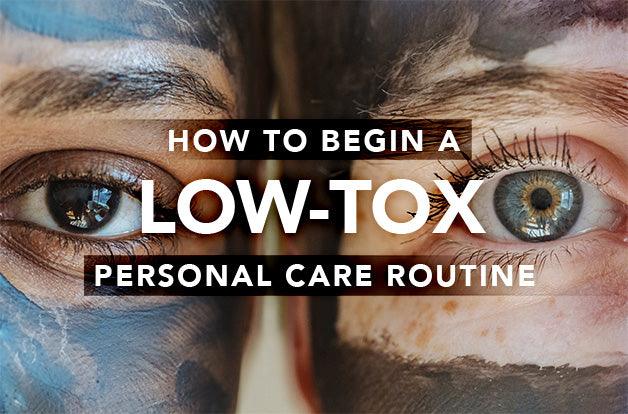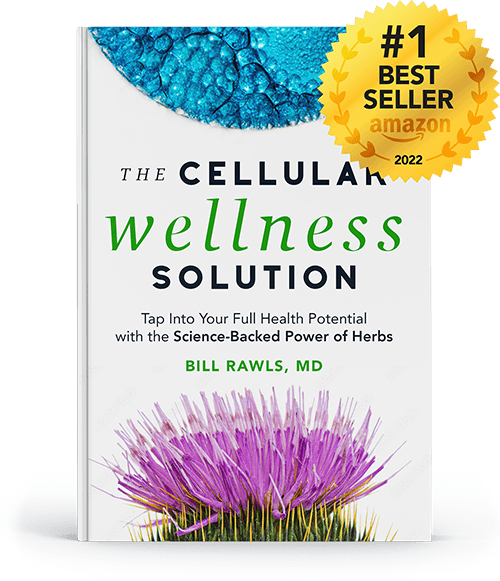Radiant skin. Fewer wrinkles. Smaller pores. In 2021, skin care and beauty brands spent over 7.5 billion dollars in advertising, touting healthier, more youthful, and hydrated skin. And consumers bought a plethora of products — to the tune of $100 billion in the U.S. alone in 2020. In fact, the average woman uses 12 personal care products daily and has exposure to over 168 chemicals, according to the Environmental Working Group (EWG) — a team of scientists, lawyers, and policy experts working to reform chemical safety laws. Men aren’t far behind either, with six personal care products per day and exposure to more than 80 chemicals.
While it’s understandable to strive for healthy, radiant skin, ads and product labels aren’t being entirely truthful about the chemicals going on and in your skin. Shouldn’t consumers be privy to the harmful health ingredients many of today’s standard personal care products contain?
You might assume the products available for purchase have been tested and are safe, but sadly this isn’t the case. As of January 2022, the European Union has banned 1,693 chemicals from being used in skin care and beauty products because of direct links to being mutagenic, carcinogenic, and toxic to reproductive organs. However, the U.S. Food and Drug Administration (FDA) has labeled only 11 chemicals as unsafe for use. Unless it’s a color additive, the FDA doesn’t preapprove ingredients in personal care items and leaves that job up to the beauty industry itself.
With vague ingredient labels and little help from the FDA, it’s up to consumers to take it upon themselves to pick health-conscious products.
Skin Care Chemicals 101
With this knowledge, it’s easy to understand why many people have begun to transition to a low-tox (AKA low-toxin) personal care routine in hopes of lessening the body’s burden and potential health risks by reducing chemical overload. Of course, chemicals aren’t fundamentally good or bad, but if science shows that a specific percentage of a particular chemical ingested, absorbed, or inhaled has harmful or toxic consequences, it might be in our best interest to limit exposure to those ingredients.

So why are there so many chemicals in our skincare products in the first place? Certain chemicals first entered the personal care product scene as preservatives, possessing antibacterial and antifungal properties. Because many personal care products are water-based, they can act as a breeding ground for mold and specific bacteria, most often E.coli, Staphylococcus aureus, and Candida albicans. Besides preventing harmful microbes from forming, these preservatives proved to be multi-beneficial to manufacturers by significantly increasing product shelf-life.
But not all preservatives have the same safety profile, and you may want to avoid some altogether when choosing your next personal care product.
Red-Flag Chemicals to Avoid
You’ve most likely had an experience where you’ve looked at the ingredient label on a product and were left scratching your head. Though you can become a well-versed ingredient detective with time and extensive research, there are a few chemicals to become familiar with right now if you want to prioritize a low-tox skin care routine.
“Most people care about what they put in their body, but they don’t understand that what they put on their body affects hormones, their health, and the environment,” says expert vegan esthetician Amber Rose Johnson, who studied product ingredients at UCLA and is the founder of The Facial Lounge in Corona Del Mar, California. For instance, certain ingredients may mimic estrogen in the body and could be problematic for some people.
Parabens and fragrances are at the forefront of the list of chemical ingredients you might want to minimize your exposure to, suggests Johnson. “The most commonly used ingredient is paraben — a substance that disrupts an organism’s endocrine system that is very easily absorbed by human skin.”
![]()
Parabens
Parabens are a cheap preservative found in many personal care products on the market, most often shampoos, conditioners, lotions, and face cleansers. Health concerns related to parabens include endocrine disorders, skin cancer, and developmental and reproductive toxicity, according to the Campaign for Safe Cosmetics (CSC), a science-based advocacy organization aimed at making beauty and personal care products safer. Common terms that signal parabens are used in a product include:
- Ethylparaben
- Butylparaben
- Methylparaben
- Propylparaben
![]()
Fragrance
The word “fragrance” listed on any product is another red flag. “Fragrances are found in almost all conventional products. Generally, the better something smells, the worse it will be for your skin,” says Johnson.
Additionally, more than 3,000 chemicals are used to make fragrance compounds, as indicated by the International Fragrance Association (IFRA). Some fragrances may pose health risks, such as allergies, sensitivities, migraines, and even more severe conditions. The ingredients making up a product’s fragrance are protected as a “trade secret” and therefore do not require the company to list the chemicals on the product label, says the CSC.
With consumers being left in the dark about the actual fragrance chemicals being used, it’s important to recognize fragrance can show up on a product label as: parfum, perfume, aroma, and essential oil blend.
Here are other potentially harmful ingredients to keep in mind:
![]()
Petrolatum
A byproduct of petroleum, petrolatum has no known health concerns if properly refined, however, most petrolatum in the U.S. is not fully refined. This means it’s typically contaminated with PAHs, polycyclic aromatic hydrocarbons. Fourteen PAHS have potential carcinogenic health risks, suggests the CSC and the International Agency for Research on Cancer. Often found in lotions and cosmetics, keep a look out for the following versions of petrolatum on labels: petroleum jelly, mineral oil, paraffin oil, and white petroleum.
![]()
PABA
PABA first came on the personal care product scene in the 1970s as it can efficiently filter out UVB radiation. Many of today’s products use PABA derivatives, most often Padimate or OD-PABA in sunscreens. Health concerns regarding PABA include allergic dermatitis, hypersensitivity, and thyroid disruption. Look for terms like Padimate O, OD-PABA, Para-aminobenzoic acid, and Et-PABA on labels.
![]()
Triclosan
Normally found in detergents, soaps, toothpaste, deodorants, and even fabrics, concentrations of triclosan have been found in urine, according to a study in Environmental Health Perspectives. The study suggests this antimicrobial agent has been linked to endocrine disruption and may negatively impact thyroid function. Research has also shown that hormone-sensitive breast cancer cells may display increased cell growth and multiplication when introduced to the chemical. On labels, you can find this chemical listed as Triclosan (TSC) or Triclocarban (TCC).
How to Begin a Low-Tox Personal Care Routine
Wondering how to reduce the concentration of chemicals bombarding your body? Enter a low-tox lifestyle – one where you make informed, conscious decisions about what you’re putting in and on your body. Here are a few tips to get you started.
1. Boost Your Low-Tox Personal Care Routine from the Inside Out.
The above red-flag ingredients and many others are actually “collagen crunchers” – toxic substances that accelerate damage to the skin, says Dr. Bill Rawls, Medical Director of Vital Plan.
In addition to learning chemical terminology and choosing products wisely to reduce the chemical load on the body, supplements that specifically target skin health from the inside out complement a low-tox lifestyle, suggests Dr. Rawls. These include:
- Vitamin A: stimulates cell growth
- Vitamin C: promotes collagen synthesis
- Vitamin D: assists the skin in protecting itself against the harmful damage of the sun
- Omega-3 fatty acids: maintains skin hydration
- Lutein and Zeaxanthin: offer antioxidant protection for the skin and eyes
- Collagen supplements: support skin collagen levels
2. Check Your Labels.
Knowledge of commonly used, harmful chemicals, learning how to read labels, and discovering transparent brands are a few of the initial yet crucial steps to transitioning to a low-tox personal care routine. Some of the best resources available online for research include The Good Face Project, EWG, Think Dirty, and CSC.
3. Swap Old Products for New Ones as Your Budget Allows.



